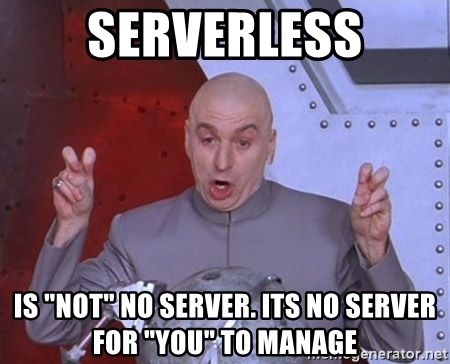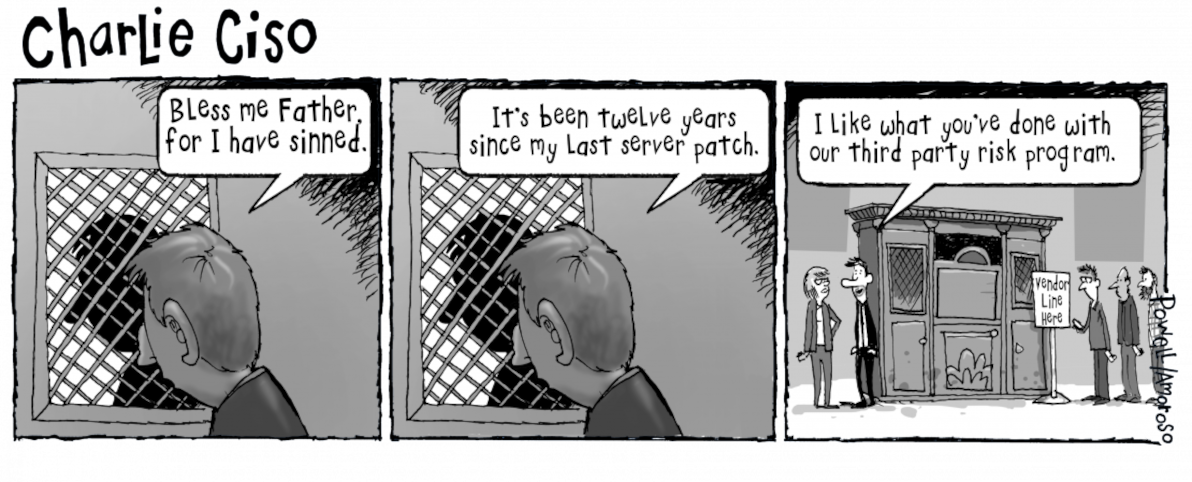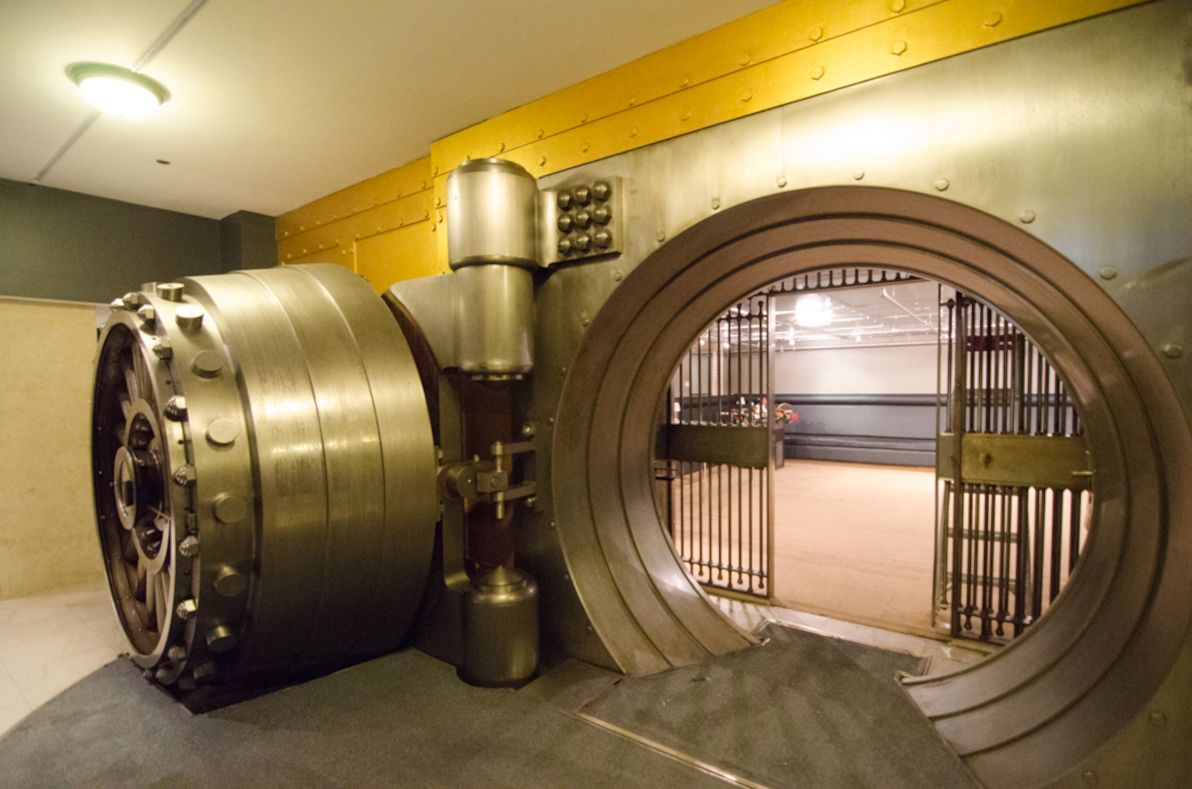I don't need a VPS anymore
I've paid for either a "shared hosting" subscription, or a VPS subscription, for my own use, for the last two decades. Mainly for serving web traffic, but also for backups, for Git repos, and for other bits and pieces.
But, as of now, it's with bittersweet-ness that I declare, that that era in my life has come to a close. No more (personal) server that I wholly or partially manage. No more SSH'ing in. No more updating Linux kernel / packages. No more Apache / Nginx setup. No more MySQL / PostgreSQL administration. No more SSL certificates to renew. No more CPU / RAM usage to monitor.

Image source: Meme Generator
In its place, I've taken the plunge and fully embraced SaaS. In particular, I've converted most of my personal web sites, and most of the other web sites under my purview, to be statically generated, and to be hosted on Netlify. I've also moved various backups to S3 buckets, and I've moved various Git repos to GitHub.
And so, you may lament that I'm yet one more netizen who has Less Power™ and less control. Yet another lost soul, entrusting these important things to the corporate overlords. And you have a point. But the case against SaaS is one that's getting harder to justify with each passing year. My new setup is (almost entirely) free (as in beer). And it's highly available, and lightning-fast, and secure out-of-the-box. And sysadmin is now Somebody Else's Problem. And the amount of ownership and control that I retain, is good enough for me.
The number one thing that I loathed about managing my own VPS, was security. A fully-fledged Linux instance, exposed to the public Internet 24/7, is a big responsibility. There are plenty of attack vectors: SSH credentials compromise; inadequate firewall setup; HTTP or other DDoS'ing; web application-level vulnerabilities (SQL injection, XSS, CSRF, etc); and un-patched system-level vulnerabilities (Log4j, Heartbleed, Shellshock, etc). Unless you're an experienced full-time security specialist, and you're someone with time to spare (and I'm neither of those things), there's no way you'll ever be on top of all that.

Image source: TAG Cyber
With the new setup, I still have some responsibility for security, but only the level of responsibility that any layman has for any managed online service. That is, responsibility for my own credentials, by way of a secure password, which is (wherever possible) complimented with robust 2FA. And, for GitHub, keeping my private SSH key safe (same goes for AWS secret tokens for API access). That's it!
I was also never happy with the level of uptime guarantee or load handling offered by a VPS. If there was a physical hardware fault, or a data centre networking fault, my server and everything hosted on it could easily become unreachable (fortunately this seldom happened to me, thanks to the fine folks at BuyVM). Or if there was a sudden spike in traffic (malicious or not), my server's CPU / RAM could easily get maxxed out and become unresponsive. Even if all my sites had been static when they were VPS-hosted, these would still have been constant risks.

Image source: YouTube
With the new setup, both uptime and load have a much higher guarantee level, as my sites are now all being served by a CDN, either CloudFront or Netlify's CDN (which is similar enough to CloudFront). Pretty much the most highly available, highly resilient services on the planet. (I could have hooked up CloudFront, or another CDN, to my old VPS, but there would have been non-trivial work involved, particularly for dynamic content; whereas, for S3 / CloudFront, or for Netlify, the CDN Just Works™).
And then there's cost. I had quite a chunky 4GB RAM VPS for the last few years, which was costing me USD$15 / month. Admittedly, that was a beefier box than I really needed, although I had more intensive apps running on it, several years ago, than I've had running over the past year or two. And I felt that it was worth paying a bit extra, if it meant a generous buffer against sudden traffic spikes that might gobble up resources.

Image source: The Register
Whereas now, my main web site hosting service, Netlify, is 100% free! (There are numerous premium bells and whistles that Netlify offers, but I don't need them). And my main code hosting service, GitHub, is 100% free too. And AWS is currently costing me less than USD$1 / month (with most of that being S3 storage fees for my private photo collection, which I never stored on my old VPS, and for which I used to pay Flickr quite a bit more money than that anyway). So I consider the whole new setup to be virtually free.
Apart from the security burden, sysadmin is simply never something that I've enjoyed. I use Ubuntu exclusively as my desktop OS these days, and I've managed a number of different Linux server environments (of various flavours, most commonly Ubuntu) over the years, so I've picked up more than a thing or two when it comes to Linux sysadmin. However, I've learnt what I have, out of necessity, and purely as a means to an end. I'm a dev, and what I actually enjoy doing, and what I try to spend most of my time doing, is dev work. Hosting everything in SaaS land, rather than on a VPS, lets me focus on just that.
In terms of ownership, like I said, I feel that my new setup is good enough. In particular, even though the code and the content for my sites now has its source of truth in GitHub, it's Git, it's completely exportable and sync-able, I can pull those repos to my local machine and to at-home backups as often as I want. Same for my files for which the source of truth is now S3, also completely exportable and sync-able. And in terms of control, obviously Netlify / S3 / CloudFront don't give me as many knobs and levers as things like Nginx or gunicorn, but they give me everything that I actually need.

Image source: Wikimedia Commons
Purists would argue that I've never even done real self-hosting, that if you're serious about ownership and control, then you host on bare metal that's physically located in your home, and that there isn't much difference between VPS- and SaaS-based hosting anyway. And that's true: a VPS is running on hardware that belongs to some company, in a data centre that belongs to some company, only accessible to you via network infrastructure that belongs to many companies. So I was already a heretic, now I've slipped even deeper into the inferno. So shoot me.
20-30 years ago, deploying stuff online required your own physical servers. 10-20 years ago, deploying stuff online required at least your own virtual servers. It's 2022, and I'm here to tell you, that deploying stuff online purely using SaaS / IaaS offerings is an option, and it's often the quickest, the cheapest, and the best-quality option (although can't you only ever pick two of those? hahaha), and it quite possibly should be your go-to option.